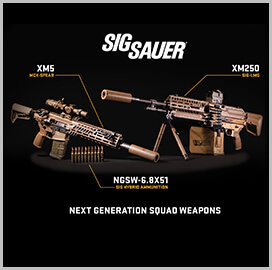The U.S. Army has chosen New Hampshire-based company Sig Sauer as the winner of a $4.5 billion contract to manufacture the branch’s Next Generation Squad Weapon system after 27 months of prototype development and evaluation work.
The firm-fixed-price contract is for the production of the XM5 Rifle and its XM250 automatic variant with a common 6.8 millimeter ammunition cartridge, according to an award notice on the Department of Defense website.
Sig Sauer will initially produce weapons and ammo for a testing effort under a $20.4 initial delivery order. The Army said it will pair the two NGSW variations with the XM157 fire control system designed to support close combat force missions.
The 6.8 Common Cartridge Family of Ammunition will employ vendor-designed cartridges and government-provided projectiles, the service added.





